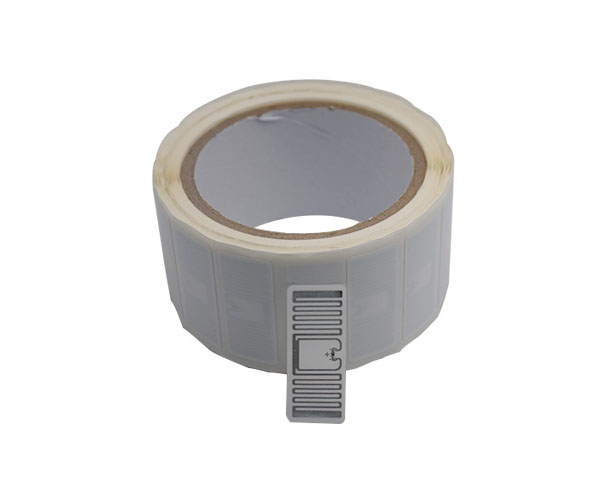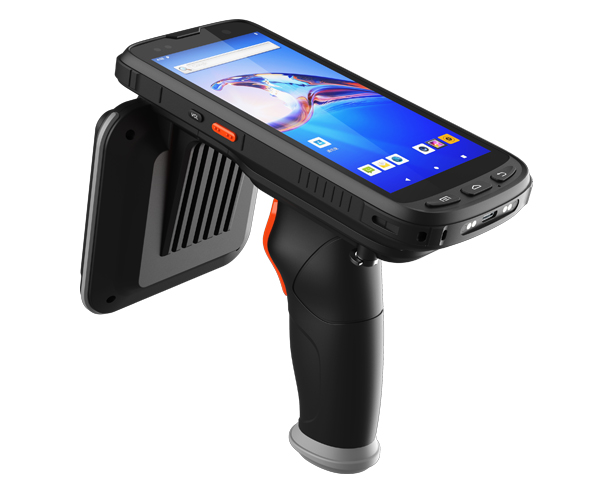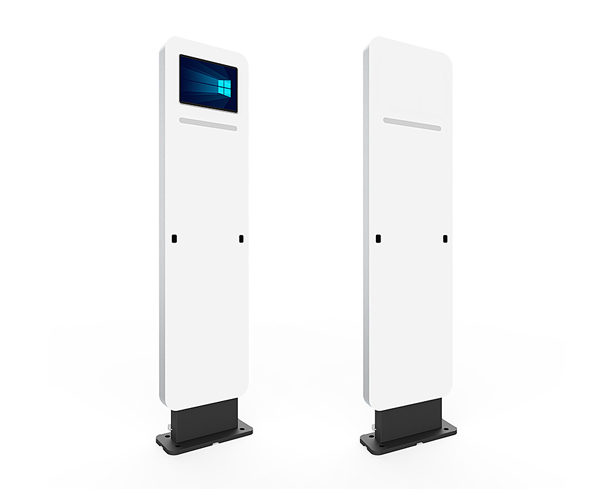Radio-frequency identification technology is a way for retailers to identify items using radio waves. It transmits data from a RFID tag to a reader, giving you accurate, real-time tracking data of your inventory.
With supply chain visibility and inventory accuracy becoming more important, RFID has gone from “nice to have” to foundational for today’s omnichannel retailers.
With RFID, retailers can automate their inventory data and improve accuracy by 30%, while reducing out-of-stock situations by 50%.
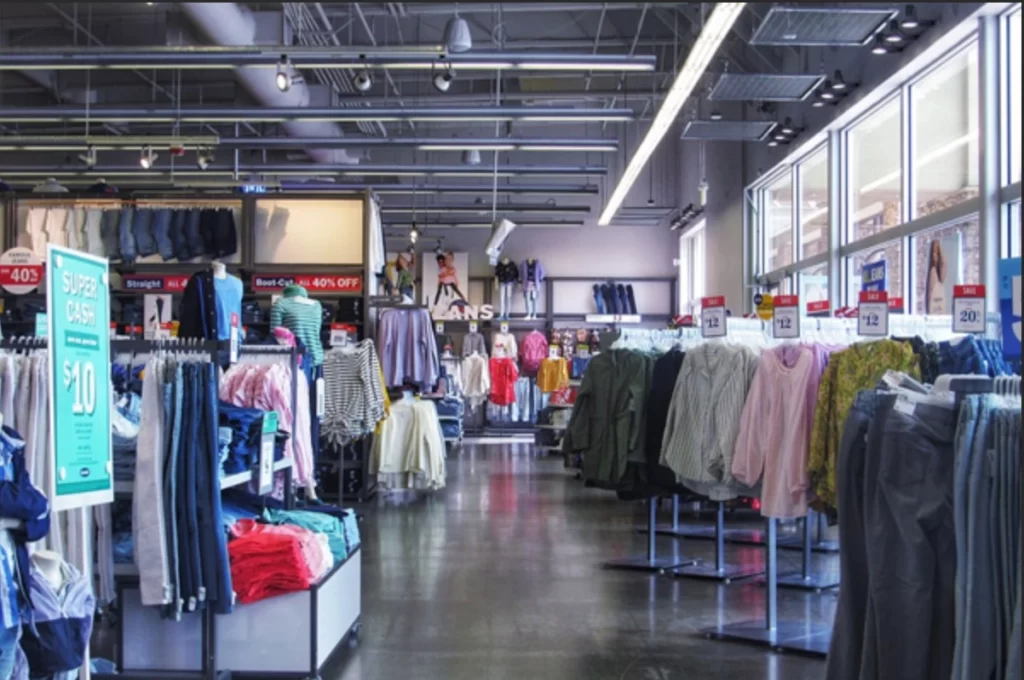
What is RFID technology?
RFID, or Radio Frequency Identification, is a technology that uses radio waves to identify and track objects. It is made up of two main parts: tags and readers.
RFID tags are tiny chips that contain a unique identifier and can be attached to products or packaging. The reader is a device which has one or more antennas that send and receive electromagnetic signals back from RFID tags. When an RFID tag is scanned by an RFID reader, the unique identifier is transmitted and can be used to track the product throughout the supply chain.
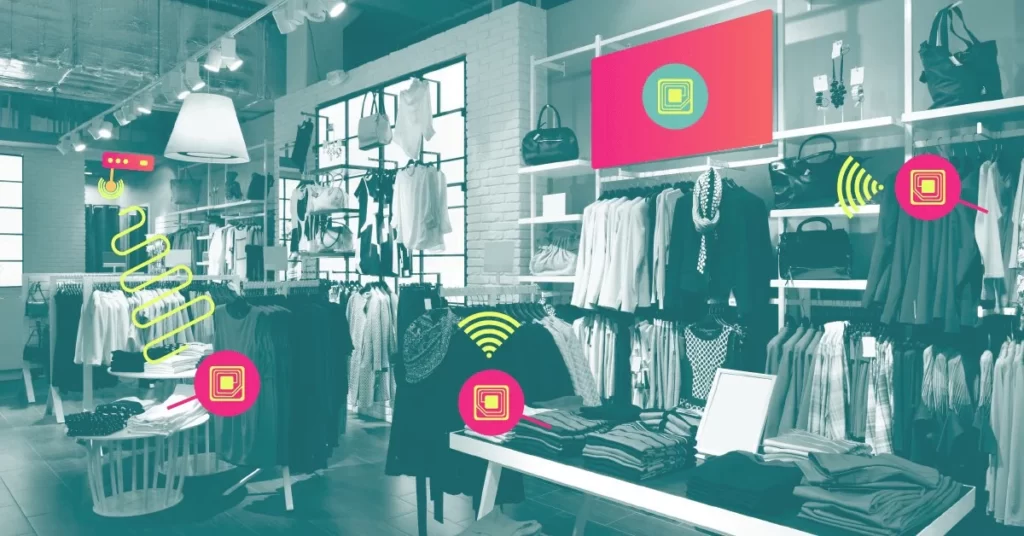
RFID tags offer a number of advantages over traditional barcodes. They can be read at a distance, so products don’t need to be individually scanned. They’re also more durable than barcodes, so they can withstand the rigors of the retail environment. And because each RFID tag has a unique identifier, retailers can use them for product authentication and tracking individual items.
RFID solutions are being used in a variety of ways in the apparel retail industry. Retailers are using RFID tags to track inventory levels and product locations in real-time. This helps them to keep better control over their inventory and reduces out-of-stock.
For retailers that need to track stock accuracy, an RFID system that integrates with your inventory can increase efficiencies significantly. You can use it to improve inventory accuracy and visibility to create better shopping experiences for today’s omnichannel shoppers.
RFID Solutions for Apparel Retail Industry
RFID in retail involves the placement of rfid tag on items that emit signals to RFID readers which are then processed by software, generating real-time results for stock taking, transactions, inventory levels, or individual customer purchase order history. Item tracking is one of the major ways that retailers use RFID. RFID technology allows retailers to track their inventory throughout the retail supply chain, from the warehouse shelves all the way to the sales floor.
RFID has many applications in the retail industry, but it is especially useful in the apparel industry.
One of the biggest benefits of RFID for apparel retailers is its ability to streamline the inventory process. In the past, retailers would have to physically count each item of clothing in their store to know what needed to be restocked. The typical retail inventory process which is very manual, time-consuming, and only done at predetermined intervals. With RFID, retailers can simply scan their inventory with a handheld device and get an accurate count of what is on hand. This not only saves time but also reduces the chances of human error. By tracking inventory with RFID tags, apparel retailers can reduce stock-outs, improve customer service, and better manage their overall inventory.

In addition, RFID solutions can help to improve store security and prevent theft. Retailers can attach RFID tags to clothing items and then use security gates at exits to detect any items that have not been properly paid for.
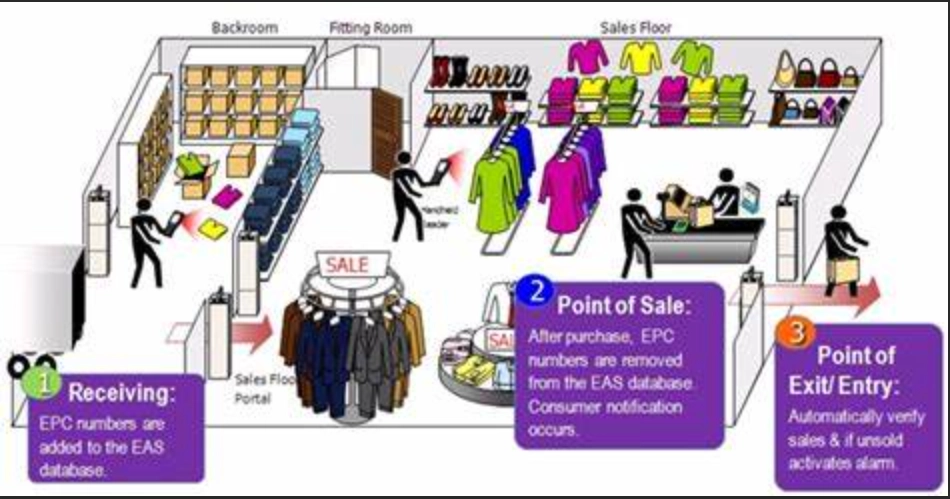
Overall, the use of RFID solutions can help to improve the efficiency and profitability of apparel retail businesses.
Benefits of RFID Solutions in Retail
The use of RFID solutions in the apparel retail industry can provide many benefits to retailers.
- Asset tracking: prevent theft and track assets that are frequently moved and often misplaced.
- Stock management: ensure that products are always in sufficient supply to meet consumer demand.
- Supply chain management: help improve product visibility.
- Payments and checkouts: retailers can use RFID to shorten queues and speed up the checkout process.
- Security: access control and prevention of theft.
- Date improvements: improvement in overall accuracy.
- Cycle count: significantly faster and more accurate.
- Store operations: instantaneous and continuous monitoring of item movement.
RFID in retail is what keeps your store running efficiently and effectively. Managing your retail inventory with RFID makes everything easier and faster. Yiiro offers state of the art RFID solutions for fashion retailers. Our RFID solutions are used for: RFID scan encoding, RFID EPC tag voiding, product locator, inventory control, stock taking and salesfloor replenishment.
Challenges of Applying RFID in the Apparel Industry
The apparel industry is one of the most competitive industries in the world. In order to stay ahead of the curve, retailers must continually look for ways to improve their operations and increase efficiency. One technology that has been gaining attention as a potential solution for the apparel industry is RFID (radio frequency identification).
RFID has already been successfully implemented in other industries, such as the automotive and retail sectors. However, there are unique challenges that come with applying RFID to the apparel industry.
One of the biggest challenges faced when implementing RFID in the apparel industry is the wide variety of SKUs (stock-keeping units) that must be managed. Apparel items come in all shapes and sizes, which makes it difficult to standardize tags and tracking systems. In addition, many apparel items are made from materials that can interfere with RFID signals, such as metal or leather. As a result, specialized tags and readers must be used in order to get accurate readings.
Another challenge faced when using RFID in the apparel industry is the potential for false positives. This occurs when an RFID tag is read but no corresponding item is present. This can be problematic when items are mistagged or just lost in the store. With RFID, many people are concerned about the privacy and security of their information, and they worry that the RFID tags will be used to track customer movements.
In spite of these challenges, retailers have begun implementing RFID in some areas of the apparel industry. There are a number of reasons why it makes sense for retailers to use RFID in the apparel industry.
How to Implement an RFID Solution in Apparel Retail
Implementing an RFID solution in apparel retail is not as difficult as you might think. The key is to start small, as a small investment of time and money can reap big benefits.
The RFID tracking process can be broken down into four phases:
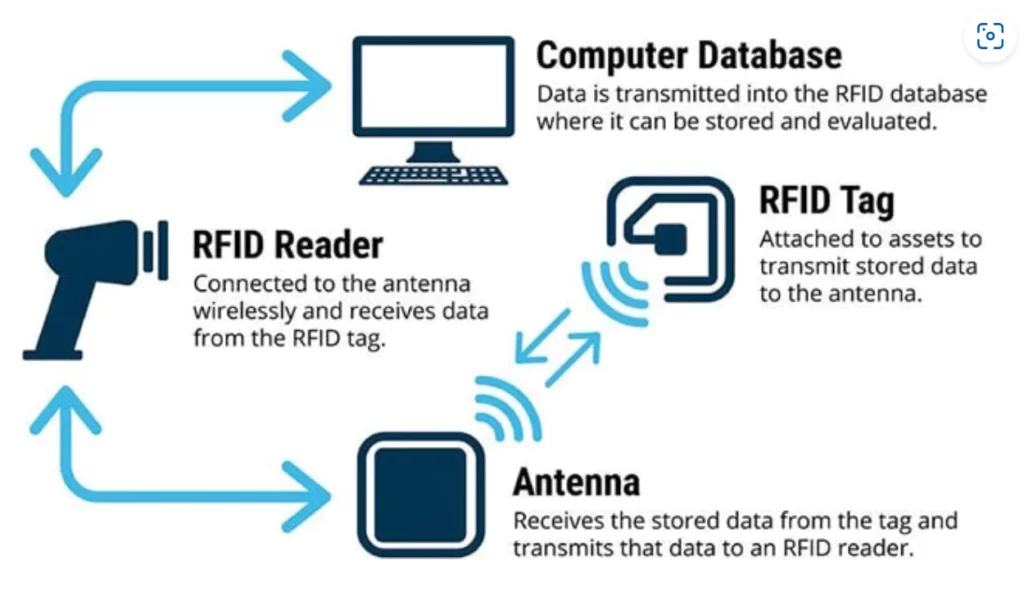
- RFID tags store and transmit encoded information about individual products.
There are three types of tags:
- RFID hangtags. In this format, the RFID inlay is inside the label and become invisible to the customer. Generally, these labels are made with paper. But also they are possible with other materials. Above all, the comparative advantages of this type of smart labels are two. In the first place, they can be fully printed with creative colour designs, as customer wishes. In the second place, the RFID inlay remains discreetly invisible inside.
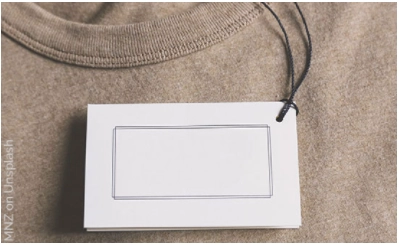
- RFID stickers. The standard formats of RFID tags are “dry inlays”, “wets” and “white-wets”. As a rule, wets and white-wets are adhesive to be attached to boxes, papers, labels, bags, etc. But as a difference, the white-wets are printable because they have a front material that protects the chip. Wets are always transparent and they can’t be printed. On the other hand, depending on the position of PET material in wets, the chip is protected or not. Wets and white-wets are standard formats, so its size is very adjusted to the antenna’s size and is always the same size depending on the inlay’s model. Finally, in wets and white-wets the inlay’s position is always centred. In opposite, when the sticker is a customized RFID tag, the size and the inlay’s position could be chosen by the customer. Besides, customized RFID labels are always printable.
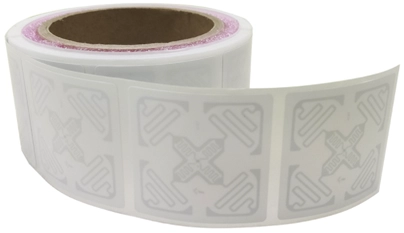
- RFID polyester labels. In the same way as the smart hangtags, in polyester labels, the RFID inlay remains invisible to the customer because it’s inserted between two polyester layers. Polyester labels can be sewn on clothes -but not directly, the better way to do that is to sew the smart label to a satin tab which is softer in order to be cut later, because the polyester label is quite tough. Another advantage of this kind of labels is that they can be printed as well. RFID polyester labels are the RFID solution for textile as well. The size and position of the inlay are personalized.
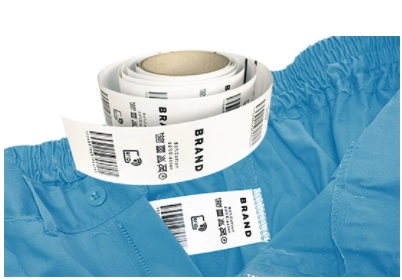
- Reader hardware (fixed or mobile) sends and receives signals allowing it to “read” and interpret data transmitted from a tag, and antenna hardware converts signals between readers and tags, effectively enabling the reader to identify a tag’s presence, ID, and location. An antenna can be integrated into a reader, or several can be connected to increase coverage.
There are three types of UHF RFID readers:
- Fixed readers, when the reader and antenna are installed in a specific place where RFID tags pass. For example, you can check out at Amazon Go without going to a cashier. You just walk through an RF zone and the reader receives the tag data.
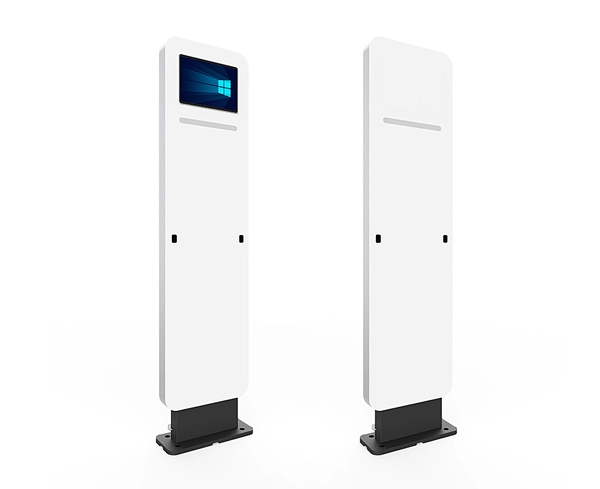
- Mobile readers, which are handheld devices that can be carried anywhere.

- Desktop reader, which is a compact and cost-effective contactless reader and writer that can be easily integrated into different systems.
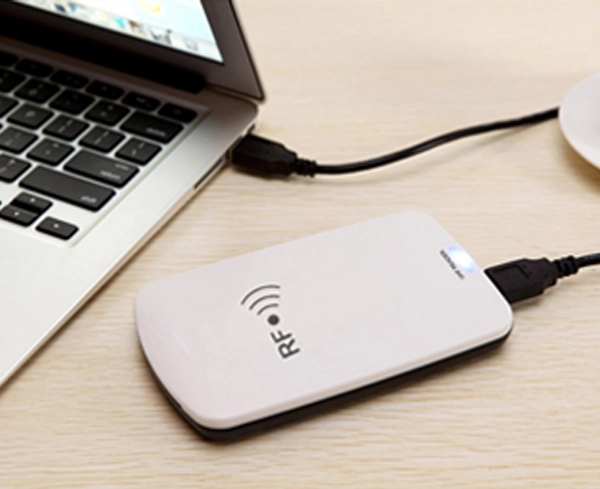
- Supporting software or services encode tags and process RFID data for end use.
Conclusion
The advent of RFID technology has been revolutionary for the retail clothing business, drastically cutting down on the amount of time spent on inventory and limiting the occurrence of inventory-related issues. RFID’s adaptability in the retail industry is sufficient to persuade the clothes retail industry that adopting the technology is an essential next stage in the industry’s evolution.
The RFID solutions for apparel retail industry are many and varied. With the right solution in place, retailers can benefit from increased accuracy in inventory management, faster checkout times, and improved customer service. However, it is important to select the right solution for your specific needs. If you are interest to find the perfect RFID solution for your business, ask for more details from our experts.
